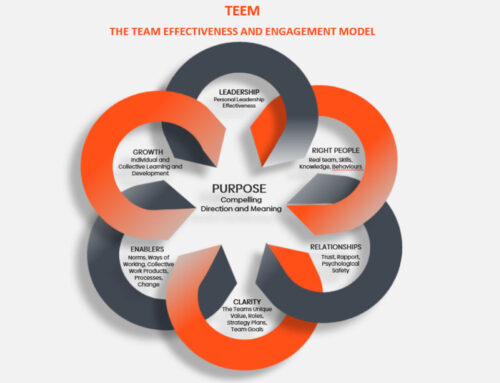
The autocratic, heroic leader of yesteryear has largely disappeared from Australian workplaces and in its place is a far more ‘distributed’ or shared leadership. A few organisations have even done away with formalised management structures and their executives genuinely share the leadership of their organisations.
Regardless of your specific environment, if you are a manager and leader in an organisation today, you are probably facing a plethora of demands and stresses coming thick and fast from many directions. The good news is, we’re all in this together, and the evidence for shared leadership is strong. However, it requires some important mediating factors to help it succeed which I will briefly explore.
For shared leadership to work you need three critical things:
- The right environment
- A constructive vibe amongst the leaders
- Individual leaders to display the right attributes
Let’s quickly unpick the mountains of research behind these simple ideas.
Right environment
It won’t surprise you to know that creating the right environment for shared leadership is the foundation for it to prosper. Research indicates the right environment must include things like:
- A clearly defined purpose that unifies leadership and the organisation
- Genuine commitment and sense of accountability that is pervasive amongst the leadership
- Clarity, commitment, and cohesion to agreed priorities
The leadership vibe
Effective shared leadership requires a particular vibe or attributes amongst the leadership itself. These include:
- Having highly competent members and seeing each other as such
- A realistic and clear understanding of the leadership teams skills (and gaps)
- Diversity (of thoughts, experience, tenure, etc.) but also a commonality that binds the group together
- A sense of ‘collectivism’ and trust!
Individual leader attributes
Beyond competence and the ability to perform the expected role, other attributes are necessary and often absent from recruitment. These are the so called ‘soft skills’ including:
- Ability to trust, and be trusted by, others
- Respect, understanding and ability to appreciate others
- Humility, integrity, conscientiousness and emotional stability
The simplicity and elegance of this checklist belies the sophistication and difficulty in developing a highly effective shared leadership model. Effective coaching organisations will focus their energies on helping teams develop the right environment, dynamics, and attributes. The good news is there is significant support for how effective shared leadership can be; particularly in chaotic environments that we are all experiencing today.
If you’re keen to discuss further please reach out through our website.
BA, MBA, MSc (Co. Psych), FAICD
April, 2022


